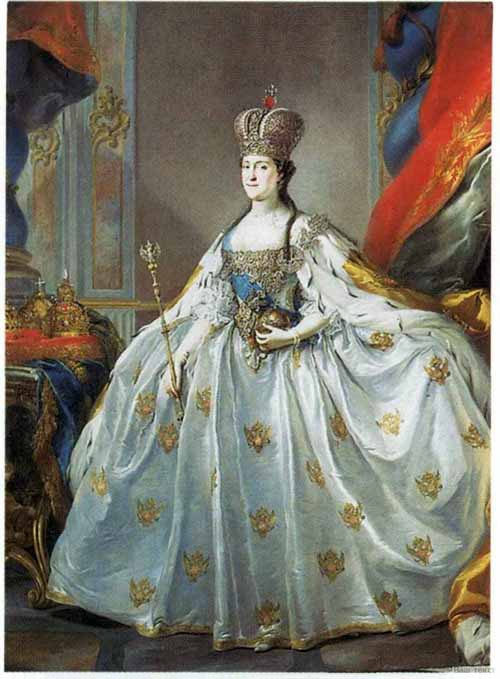Stefano Torelli (1712-1780)
C Stefano Torelli was in Russia is already a mature master, in 1762. He was a pupil of the famous Neapolitan painter and architect Francesco Solimena (he also studied Pietro Rotary ), adherent decorative Rococo, then worked in Venice, where he was finally formed his creative manner. In 1740, Augustus III Torelli invited to Dresden for a permanent job at the court. The paintings of Dresden palaces by the artist, were killed during the Second World War: the only kinds of Dresden brush Belotto human figures belong Torelli. In the 1740-1760-ies he worked in the German cities - in Bayreuth, Frauenburge, Rostock, painted lampshades, painted portraits and altarpieces. Last order of this kind before the invitation to go to St. Petersburg Igor Shuvalov - ten murals with allegorical compositions in the audience chamber hall of Lübeck (1759-1761). In Russia Torelli, appointed professor at the Academy of Fine Arts, continues to work with the same intensity and scope, that is to do "everything": portraits, painted ceilings, wall paintings, magnificent allegorical compositions and mythological scenes are executed them quickly and with equal skillfully. This provides him success and the opportunity to a large number of orders. Among the works of Torelli's not all known, and not all survived to this day - you can only trust the descriptions of the biographer. However, until we reached perhaps the most important work by value Torelli - his series of works on design of the Chinese Palace in Oranienbaum, including nine wall panels with images and music bubble on "Venus and the Graces" for the so-called Hall of the Muses (the end of the 1760 - beginning of 1770), a panel "The Rape of Ganymede" and "Juno with a genius" to the Great Hall (1768), of "Longing Mars," "Venus," "Diana and Endymion" to Wisteria room. In the pictures and lampshades Torelli almost no straight lines - here everything is made of whimsical twists, rocaille scrolls, all drawn to the shape of circles and ovals, the material forms emphasized lack of constructiveness. Sophistication faded scales, vibrant gold, whimsical ornament asymmetry - endless arabesques, floral motifs, flowing ribbons, dreamy pampered falling off lines and wrinkles - these features, fully manifested in the painting, decorating the Chinese Palace, are common to most works of Torelli. But the commitment Torelli Rococo style was the main reason that its fine art and skill has not received wide support, not become the subject of imitation (just as it did a decade earlier with Rotary). Russia has already gained momentum classicism, formed different aesthetics, for which the natural were the work of A. Losenko and P. Sokolov , and in itself a picturesque freedom of paintings Torelli was seen as something obsolete. Characteristically, portraits Torelli much stricter and easier his compositions, they have a psychological accuracy and insight of vision - as soon as the very model of "provoking" the artist at lightweight, decorative and elegant solution, there are portraits in bright tones, where the content of the images reduced to the beauty, charm and grace ("Portrait of Countess Alexei Chernyshev") Torelli lived in Russia c 1762 until his death and was buried in St. Petersburg in 1780. In a diverse picture "Rossika" (creativity of foreigners in the Russian service) every artistic phenomenon to varying degrees helped form - complex and indirect ways - an independent Russian school. Played a role in this process ambiguous and Stefano Torelli.
The artist's works |
USSR, woman, Alley, портрет, village, Яблоки, tree, Gardens, ancient, strike, Green, Autumn, ships, акварель, yellow, Field, China, garden, Day, truck, Winter palace, Forest, Лето, Cathedral, Petersburg, Россия, picture, window, Пейзаж, Fortress, дедал, Mountains, River, лошадь, working, лето, viburnum,
code at our gallery
artist Stefano Torelli , Russian artist Stefano Torelli , about the artist Stefano Torelli , Information about artist Stefano Torelli
watch also | ||||||||||||









